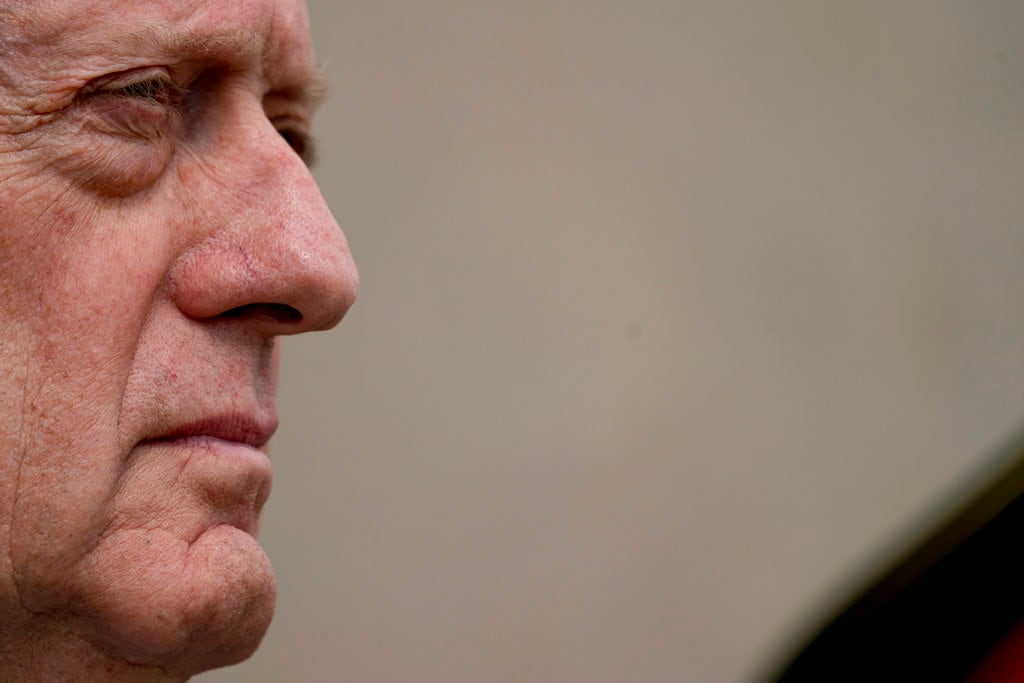WASHINGTON — The Pentagon’s two-year budget boost may be as good as it’s going to get for the military, the House Armed Services Committee’s top Democrat warned Defense Secretary Jim Mattis on Capitol Hill on Thursday.
The comments come amid new government estimates that the U.S. budget deficit will exceed $1 trillion in two years, as tax cuts and spending increases signed by President Donald Trump do little to boost long-term economic growth.
As Mattis testified on the administration’s 2019 budget request, HASC Ranking Member Adam Smith, D-Wash., pointed to the downward pressure that growing deficits and budget caps could create in 2020 and beyond.
“While 2018 and 2019 are great, I hope you are also planning for a lean future, because we are looking at a trillion-dollar deficit this year,” Smith said, adding that the US national debt is approaching $22 trillion.
CBO pegs the 2019 deficit at $981 billion and at more than $1 trillion each year thereafter, for a total of $12.4 trillion through 2028.
Without “big picture” budget action from Congress, the nation faces an “enormous problem” fueled by its $1 trillion per year deficit spending habits, Smith said.
“We’re going to be right back in the uncertainty a year from now if we don’t come up with some comprehensive way to address our budget challenge,” he said.
Smith’s remarks offer a sense of the direction the committee might take if he were leading. Paul Ryan’s planned retirement from Congress, with more than 40 other GOP departures from the House, fueled further speculation this week Republicans could lose the lower chamber to Democrats in the 2018 midterms.
RELATED

Though Mattis touted the continuation of Obama-era nuclear modernization plans as a priority, Smith reiterated his longstanding skepticism about the price tag, given the future budget environment. Fewer nuclear weapons means a lower chance of a miscalculation, he said.
“I just want to put it on the record, I don’t think we need to spend $1.2 trillion modernizing our nuclear weapons,” he said. “China has 275 nuclear weapons. We have 15, 20 times as many.”
Smith acknowledged the military’s “readiness crisis,” and hailed the budget deal’s temporary stabilizing effect. One of his top priorities, he said, was to see the budget boost address the problem.
“There will be other needs, there will pressures. I hope we don’t give in to those, I hope we remember the troops come first,” he said.
The two-year budget deal did not ease Budget Control Act caps for 2020 and 2021. When Smith pointedly asked Mattis whether DoD was ready to absorb the equivalent of an $80 billion cut, Mattis affirmed it would be insufficient to defend the nation and that he was not planning for it.
“I’d love to see the budget go down, and the world that we’re looking at out there, I don’t think that’s going to be the case,” Mattis said.
RELATED

In a separate exchange with HASC Chairman Mac Thornberry, Mattis and Joint Chiefs Chairman Gen. Joseph Dunford both emphasized procurement and modernization alongside operations and maintenance spending.
“Right now, we cannot repair our way out of the situation we’re in,” Mattis said. “We’re going to have to buy, in some cases, some of the capabilities we have worn out.”
Pentagon Comptroller David Norquist, who is leading the first full audit, appeared at the hearing though he was not on the witness list. Mattis touted the audit and a commitment to budget discipline.
Republican deficit hawk Rep. Mo Brooks, R-Ala., approached the issue from the other side of the ideological spectrum, prompting Mattis and Dunford to affirm the nation’s deficit and debt threaten national security.
Acknowledging the DoD budget request is “an awful lot of money,” Mattis noted that defense spending represented 5.7 percent of GDP in 1985, versus 3.1 percent in the 2019 budget request.
“We believe America can afford survival,” Mattis said. “I recognize the competing and very tough decisions on domestic spending, on healthcare and on defense. I can only tell you we will spend every dollar as wisely as we can.”
Joe Gould was the senior Pentagon reporter for Defense News, covering the intersection of national security policy, politics and the defense industry. He had previously served as Congress reporter.








